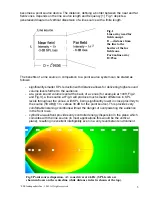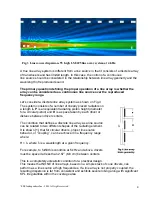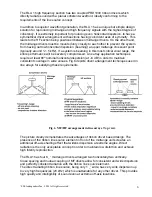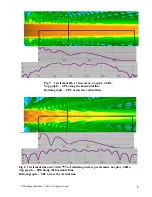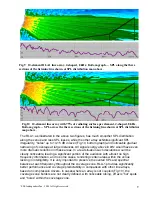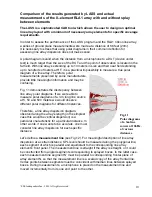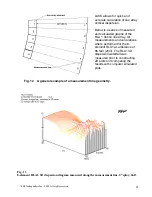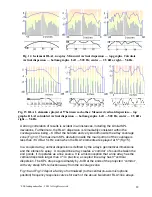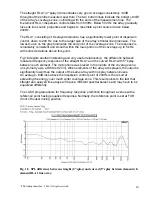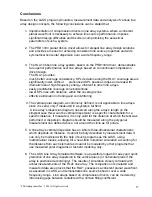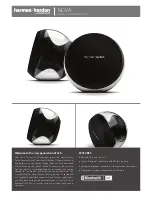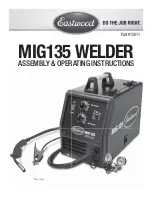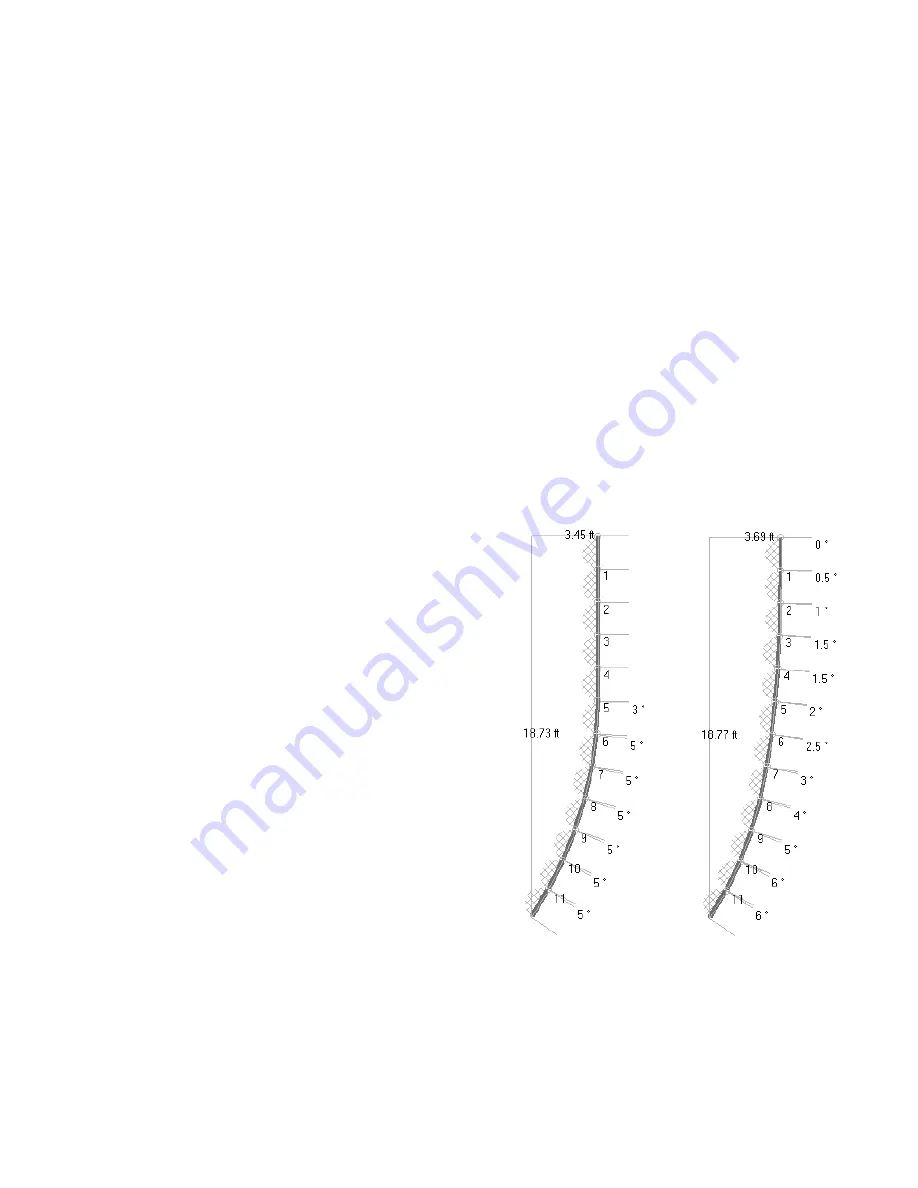
' SLS loudspeakers Inc., 2002. All rights reserved.
15
J –type versus “progressive splay” line arrays
While some applications and venues could be generally divided into certain typical
categories it seems more appropriate to provide a system designer with comprehensive
and flexible parameters configuration tool rather than create fixed set of parameters for a
discrete number of line array geometries with their dedicated DSP settings.
Extensive research during the RLA/1 development proved that even small, seemingly
insignificant changes in array or venue geometry parameters may lead to noticeable
improvement or degradation of coverage consistency. It was also found that line array
SPL balance changes with distance, therefore any DSP processing that attempts to
compensate for distance dependant deviations is useful only in a limited space and may
be even detrimental to other areas of the venue.
Instead of relying on predetermined geometry/DSP configurations it is more beneficial to
optimize system geometry for a particular venue using the LASS program. Such an
approach eliminates the need for extensive use of DSP processing and may result in a
line array with fewer cabinets. This not only improves sound quality, but more importantly,
provides a much more reliable system with less hardware and shorter rigging time.
The LASS program allows for quick and vivid
display of performance parameters, such as
SPL curves along the listening lines. Using a
comprehensive iterative process, it is easy to
design the optimum line array system for a
given application.
As an example, two RLA/1 line array
configurations were simulated for a particular
venue. Fig.19 shows these two arrays,
consisting of12 elements: the array on the left
is commonly referred to as a J-type array, the
array on the right is what we will call a
progressive splay array. There is no standard
definition for each of these types.
We assume that the J-type array is an array
having a vertical portion without a splay
between elements, which at a certain point is
connected with a curved portion, with a certain
curvature and thus certain splay angles between
each of the elements.
An array with a progressive splay has
progressively increasing splay angles between
elements or segments of elements without a straight vertical segment.
The venue has three seating areas ( three listening planes), with the furthest point being
200 feet away and 40 feet high. Fig. 20 shows simulated coverage of the J-type array and
correspondent SPL distribution along the listening planes at 2 kHz.
Fig. 19 Line array geometry
examples: J-type - left, progressive
splay — right.



